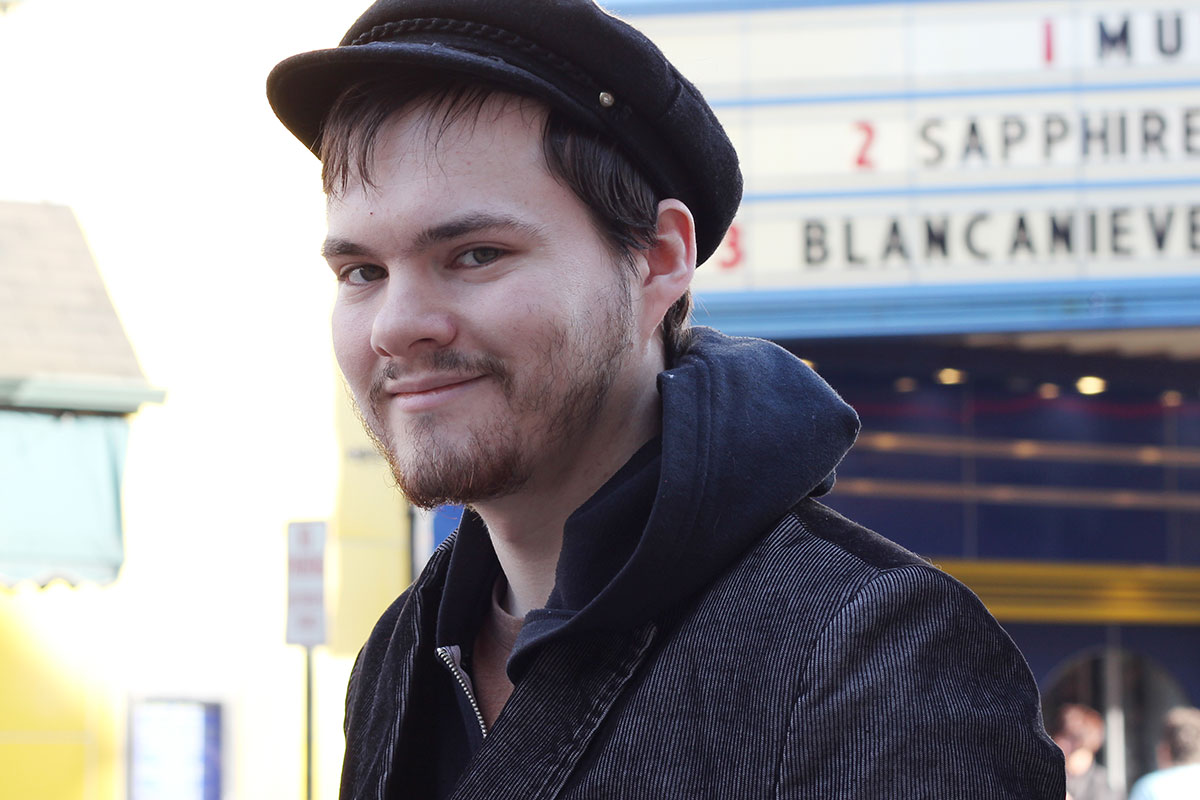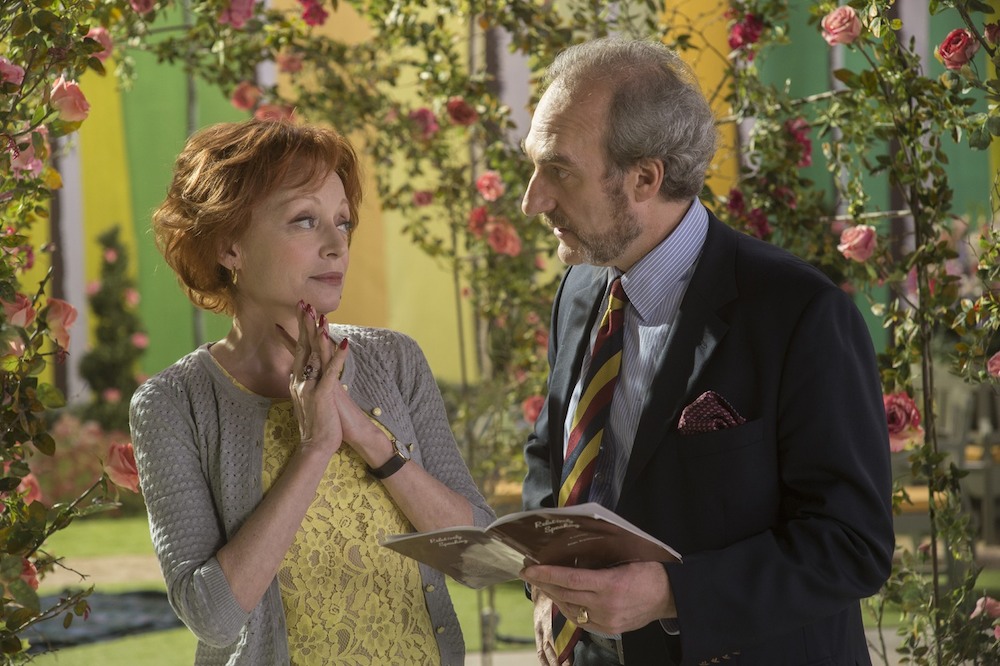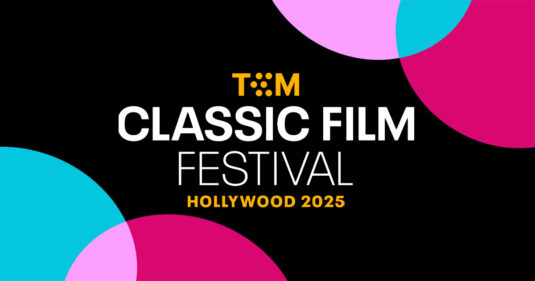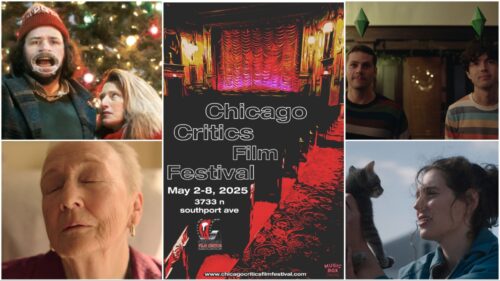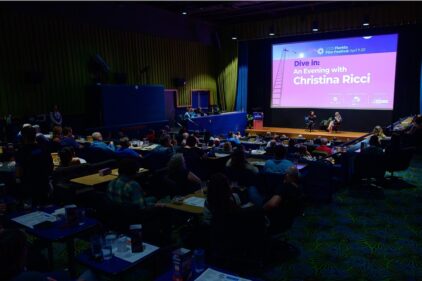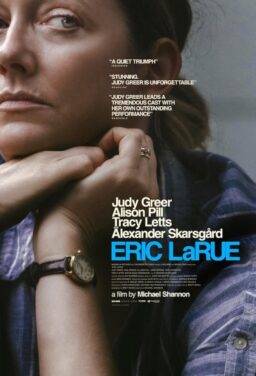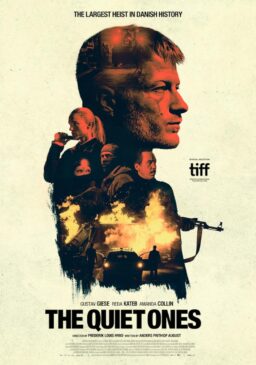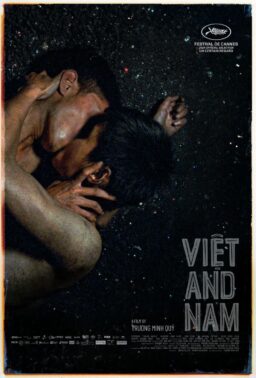The retrospectives at the 2014 New York Film Festival have
been bountiful gifts. Watching a lot of new movies in a row day after day can
give you a kind of blindness to anything but the moment you’re standing in,
comparing movies that have no business being compared. With the retros, we can
put ourselves in the past for a moment and remember what it must have been like
to be in the first screening of Sergei Parajanov’s “Sayat Nova,” or “The Color
of Pomegranates” as it’s been known for most of its life (it screens Thursday
10/2 at 6 PM). Even in the context of the furiously churning waters of 1968, it
was radical. Today it looks like the most jaw-droppingly different film I’ve
seen in this fiercely eclectic lineup. In ‘68 the rulebook was still burning
and a new language was being written on every movie screen. “Sayat Nova” found
a bold new way to tell a man’s story, by bouncing his words off of perfectly
assembled images like sonar. Human beings, fabric, paint, food, animals and
kinetic violence are placed together in sensual decoupage, while the soundtrack
seems to sing to itself. It was one of many tears in narrative fabric that
marked the sixties, and today it’s a springboard many artists use to get
further into the cinematic stratosphere.
There is a yearning at the heart of many of the main slate
films this year, a search for new ways to relate to a world in flux. We’re
destroying and rebuilding faster than anyone can keep up with and desperate
times call for a new language to describe feelings that occur in a context we’ve
never encountered. The modern cinema is trying change its audience, or at the
very least send patrons back into a world that has become increasingly
irresolute with the added confidence of knowing that our artists are just as
confounded. We’re all “searching for a place of refuge,” in the words of “Sayat
Nova,” and there’s no safer place right now than the New York Film Festival,
where every day you can watch a new director combat an unknowable present by
reorganizing the conversation. Not for nothing has Jean-Luc Godard called his
latest film, a sickening lurch through time into another dimension, “Goodbye To Language” (playing 9 PM on
Wednesday 10/1). One imagines William Hurt experienced something similar to
Godard’s sensory experiment in his hyperbaric chamber in “Altered States.” Even
films with easily read intentions, like the thrilling “’71” or the tricksy “Gone
Girl” have raced down stylistic rabbit holes to destabilize their audience.
One quote from “Sayat Nova” has come back to me every time I’ve walked into a
new movie at NYFF. “You abandoned us
and went away, but we the living wrapped you in a cocoon so in your new world
you would burst out like a butterfly.” Has our cinema burst out yet,
or is it still in its cocoon?

A boy dances to pulsing music, surrounded by fog and neon
lights. He takes the bus home. He heads straight to the backyard and goes for a
swim. He mows the lawn but breaks the mower. He tries to repair it but is
distracted by a gun. He takes the gun and shoots himself. Then his story
begins. That’s the incredible, unseating preface to “Two Shots Fired” (playing at 6 PM on Monday 9/29 and at 3 PM on
Tuesday 9/30), the latest from the sadly unknown Argentine director Martín
Rejtman. It’s a tonal bluff, in one way, preparing us for a meditation on death
that’s never quite center stage. The first hint that the film is actually a
supremely deadpan comedy comes when doctors can’t locate the bullet in the
boy’s body, yet it still sets off every metal detector he passes. The hero’s
attempted suicide is like a rock in the narrative’s shoe.
For every event, kiss, argument, trip and slight reveal, the
film remains about how little the event affected everyone, maybe the funniest
joke in this often hilarious film. Rejtman’s clipped diction, dropping scenes
in your lap like a stack of books, compliments his characters’ insistence on
over-explaining everything. They talk as if they anticipate being caught in a
lie tomorrow. Rejtman plots like he’s updating an obscure old novel, turning a
blind eye to his lead for long stretches in the stubborn belief that everyone
he encounters is interesting enough to anchor the film for a while. A third act
jaunt to the beach with characters we don’t know that well doesn’t quite pay
off, but changing focus so brazenly takes guts. Rejtman plainly sees things in
a way few other directors do. Everyone’s default posture in “Two Shots Fired,”
hunched over, eyes half-closed, suggests that life is often just a little too exciting
for them to handle. “Two Shots Fired” is on its own time and while getting in
sync might take a little effort, it’s a bewitching state of mind in which to
exist. Anything can happen, and none of it is by accident.
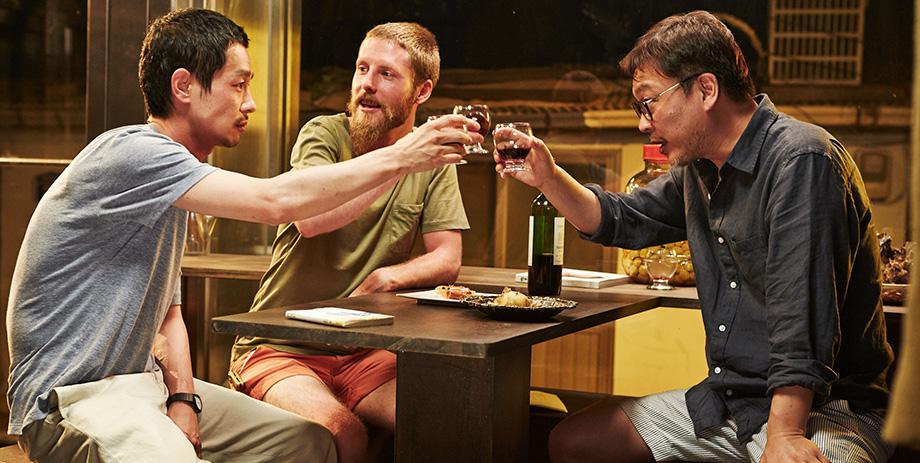
Equally funny and just as structurally unhinged is Hong
Sang-Soo’s “Hill of Freedom” (playing
6 PM on Tuesday 9/30 and 9 PM on Wednesday 10/8). Ryo Kase continues his
auteurist good luck streak after having worked with Clint Eastwood, Abbas
Kiarostami, Michel Gondry, Gus Van Sant, Kiyoshi Kurosawa and Takeshi Kitano,
by playing Hong’s latest befuddled dreamer. Kase is Mori, a Japanese tourist in
South Korea who came to visit an old flame but loses sight of his goal after
hanging in the same neighborhood for too long. He initiates an uncertain
courtship with a waitress, who’s also attached to someone else, and goes out
for endless drinking sessions with a local wastrel. Hong loves framing devices
as much as William Castle loved gimmicks, and “Hill of Freedom” has his best
one yet. The story is told through a series of letters sent by Mori to the
object of his affection, but she drops them and mixes them up. Naturally she
then reads them in the incorrect order. Though maybe not his best film (I can’t
recommend “Our Sunhi” and “Nobody’s Daughter Haewon” enough), it does ask some
typically snappy questions. What part of a story matters when the audience has
heard it all before? If a drama is bookended by upset, as ours tend to be, what
difference do the hills and valleys make? The thing that cuts through the
playful commentary is one poignant revelation: Heartbreak is everyone’s second
language. It makes us a foreigner everywhere we go.

I’ve been incredibly lucky in that I can count the films I
didn’t connect with at NYFF on one hand. Having said that, there are a fair
number of films that are respectable before they’re lovable. “Hill of
Freedom’s” sense of play would be commendable even if it weren’t one of the
funniest films of the year. Hong’s sharp wit and empathy for his characters
pushes “Hill of Freedom” beyond admirable into lovable. On that note I’m of two
minds about Matías Piñeiro’s “The
Princess of France” (playing at 12 PM on Sunday 10/5 and 6 PM on Monday
10/6), a tangle of messy relationships combed over a Shakespearian framework.
At 70 minutes it goes down easy, but I’m worried there isn’t much more to it
than the pleasure of watching people’s romantic energy bounce off each other
like pinballs. The story is negligible: a group of friends and lovers, current
and former, convene to produce a radio play adaptation of “Love’s Labour’s
Lost” while sorting out their own frayed connections. Piñeiro has what you
might call formal restless leg syndrome, seizing every opportunity to drive his
theme home with a new device. He films whole scenes in claustrophobic, Caraxian
top-down close-up. He repeats scenes with different outcomes, he repeats
choreography (Piñeiro is a consummate choreographer) to obfuscate supposed
changes in our nature, he shrinks an hour to just the moments when two people
kiss, he morphs the dynamic of a play into a wordless soccer game observed from
a rooftop. It’s thrilling, but it gets in the way of caring about anyone. You
don’t get meaningful close-ups of most of the actors until it’s far too late to
care about telling them apart (the point, perhaps?), and then it’s a hop, skip
and a jump until the ending walks out like a deer in front of a car.

I recommend this trifle even if it never arrives anywhere
special because there is no thrill equal to that of watching someone driving
headlong into uncharted territory. Though unsatisfying on a phenomenological
level, “The Princess of France” is a delectable exercise in deconstructing
inevitabilities. Too few directors drive without headlights. Even two of my
favorite films playing this year, “Jauja”
by Lisandro Alonso and “Horse Money”
by Pedro Costa, plant their feet in a cinematic past as they bypass western
dramatic momentum entirely. “Life of
Riley” (Playing 9 PM on Friday 10/10 and 2 PM Saturday 10/11), however, is
a bolt from the blue, almost entirely without precedent. This may because its
creator, the late and much missed Alain Resnais, was himself sui generis. A
trailblazer who discovered entire cinematic continents, Resnais loosened up as
he grew older, but never stopped being bigger than the four walls of a film
screen. His penultimate film, “You Ain’t Seen Nothin’ Yet,” seemed like a
challenge to those of us who would write him off before his time. His time did
come, despite my disbelief, and he’s left us a treasure map many have had a
hard time deciphering. Just what is “Life of Riley”? Let me see if I can’t get
you excited for it.
A doctor learns that his patient, George Riley, also a close
friend, is dying and accidentally tells his gossipy wife. Soon the whole town
knows. The doctor’s friends, a whole amateur dramatic society between them,
agree to cast George in their latest play to keep his mind off his impending
death. Resnais takes this farcical structure (adapted from an Alan Ayckbourn
play, but maybe ‘adapted’ is too strong a word) and just starts tying stylistic
notions to balloons and setting them free. Scene changes are denoted by
sitcom-y music and dissolves to Pictures of
the sets about to be used, drawn by the brilliant graphic artist Blutch. These
stop about an hour into the film for no reason then continue a few minutes
later.
The sets are all theatrical stages with painted curtains
standing in for trees and houses. George Riley, the title character, is never
glimpsed on screen. The close-ups are straight out of “The Brain That Wouldn’t
Die”. When Resnais decides his
characters need to be seen up close and alone, they are suddenly framed against
a green-screen backdrop, replaced in post by thatched black-and-white
backgrounds like something from an amateur photography program. This device is
the most galling of all, unless one divines a reason. I will not claim to have
the answer to this puzzle, for that would be boring and presumptuous. What I
will say is that taking his actors off set to film their close-ups and never
once interrupting the continuity of their performances, is a challenge they all
happily rise to. Resnais dreams up one roadblock after another and all of them
happily jump it.
Sabine Azéma, Resnais’ wife and muse for over fifteen years,
for instance, has evidently been directed to never let a hint of sorrow into
her performance. Ridiculous on paper, beguiling and beautiful on film. None of
it should work, and clearly for many people it has not, but “Life of Riley” must have been a dream for his players,
who were likely never asked to stretch themselves in this particular direction
and may never again get a chance like this. Resnais is an artist who,
throughout the course of his legendary career, never stopped searching for a
new mode of expression, and he has left us with a puzzle box we could spend an
eternity deciphering if we chose to. “Life of Riley” is a joyous game, a final
wink from a character we never see. If the cinema lies in a cocoon, “Life of
Riley” has made the world it will emerge into a little more beautiful in its
gallant strangeness. We may now be ready to receive the butterfly.
